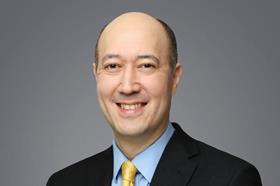In the French village of Puyricard, near Aix-en-Provence, where my brothers and I grew up, a home visit by the family doctor was no small occasion. We were under strict parental instructions to dress smartly and to be on our best behaviour. When the doctor arrived, he embodied kindness, competence and dignity.

Today, when I visit my ever-changing GP, the experience could hardly be more different. Once my name is displayed on the waiting room board (for all to see – so much for confidentiality!), I locate the assigned consultation room, knock on the door, sit down on the chair, and wait a moment to allow the doctor to finish whatever he or she is doing on the computer screen. I assume the doctor is reading my medical history. Eventually, the doctor will break the awkward silence and say 'What can I do for you?', and that is my cue to recount the problem.
This interaction is not unique to GPs. I have had the same experience with hospital appointments. In the private sector, the doctor collected me from the waiting room and established eye contact, but the dynamic still felt transactional rather than personal.
I was reminded of these experiences recently, when Martin Elliott, an Emeritus Professor of Cardiothoracic Surgery at University College London, addressed the Osler Club of London on the subject of bedside manner. He suggested doctors should learn the patient’s name before the consultation, stand up when the patient enters the room, smile, and say something like 'Good morning, Mr Sokol. Nice to see you. Please take a seat.' Such small gestures cost nothing but can transform the patient’s experience.
His observations prompted me to reflect on my own practice as a lawyer. There are many similarities between lawyers and doctors, not least that both professions deal with people going through difficult moments in their lives. For patients and clients, the stakes are high, and they often cling to every word, gesture, or expression, interpreting even the smallest cues - a frown, a raised eyebrow, a scratch of the nose - for deeper meaning.
Read more
When I was a pupil (first year as a barrister), my pupil master spoke of 'total advocacy', the idea that as soon as you enter the court building, you must behave in the same way as you would in front of the judge. You must assume that members of staff, ushers, clerks, clients, solicitors, and fellow barristers are observing you at all times. A show of impatience or an uncivil remark to a security guard can reach the judge’s ears in a flash.
I imagine most doctors and lawyers believe that their bedside manner is excellent. Yet, it is difficult to self-assess this skill, which is fraught with bias. Clients and patients, reluctant to offend the person handling their case, rarely offer honest feedback on that front.
Over time, with seniority and power, we risk losing the respect and courtesy with which we treated others at the start of our careers. We forget to behave as though we are always observed and evaluated, and we lower our standards of conduct. This coarsening of manners, which occurs gradually, is a major occupational hazard, and it can lead to treating patients or clients in ways that are curt, condescending, disinterested, or downright rude. Sir William Osler, the great physician of the 20th century, observed in 1897 that ‘the ceaceless panorama of suffering tends to dull that fine edge of sympathy with which we started’. The same can be said of our work as lawyers. The remedy lies in recognition and regular reminders.
Too often, it is only when practitioners find themselves on the receiving end of a consultation with a doctor or lawyer that they recognise the importance of a good bedside manner, and the deficiencies of their own.
Perhaps the simplest intervention would be to display on our office walls, among the degrees, trophies, and other accolades, the inscription of the golden rule of humanity: ‘treat others as you would want to be treated’. These nine words may be enough to remind us to see clients as fellow human beings, often frightened, intimidated or nervous, and not just problems to solve.
Daniel Sokol is a medical ethicist and barrister at 12 King’s Bench Walk. He is the co-author of ‘A Young Person’s Guide to Law and Justice’ (Book Guild, 2024)































4 Readers' comments